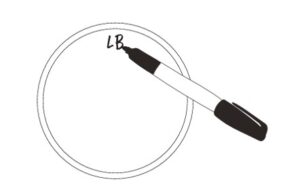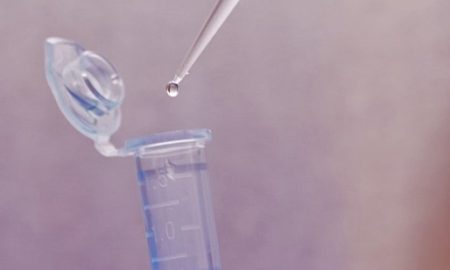How to pour agar plates for bacterial culture
If you are looking to perform a lab using bacteria, you must first pour Luria-Bertani (LB) agar plates. LB agar is a nutrient-rich media that typically serves as growth media for bacterial cells. Here, we share some tips and tricks for pouring LB agar plates for your lab or classroom.
Note: These instructions are for quick, non-sterile LB agar plates. Plates poured based on these directions are for short term classroom use only, and should not be used to grow bacteria for research or diagnostic purposes.
Pouring LB agar plates for bacterial culture:
- Label: LB agar plates should always be labeled on the bottom of the plate, not on the lid.

Always label plates on the base, not the lid - Weigh: 4 g of premixed LB-agar powder for every 100 mL of media you wish to make.
- Measure: 100 ml of distilled water, or adjust volume to your needs.
- Combine LB-agar powder and water in a heat resistant container:
- Add LB agar powder to water to create a 4% (w/v) solution (e.g., dissolve 4g of LB agar powder into 100 ml of distilled water)
- Make sure the container is not pressurized and has abundant room for expansion during boiling (e.g., use a loosely capped 500 mL bottle for 200 mL of media)
- Heat in microwave or on hot plate.
- Allow LB agar powder to dissolve completely into solution.
- If heating in a microwave, pause and mix as the solution boils, to ensure that it does not boil over.
- The LB agar solution should be fully transparent, with no clumps or crystals of agar powder remaining.
- Cool: LB agar solutions need to cool prior to the addition of supplements and pouring into plastic Petri dishes.
- Cool LB agar for at least 5 minutes or until it reaches ~55 ℃ in order to ensure that the temperature will not disrupt the functionality of your supplements.
- Add antibiotics or other supplements:
- LB agar plates that are used for selection usually have an antibiotic added, which allows only transformed bacteria to grow.
- Plates may have additional supplements, such as X-gal, which are also added at this time.
-

LB agar plates stacked with agar on top Pour plates, coating the bottom of each plate with liquid LB agar to ~3 mm thickness.
- Once poured, cover plates with their lids and allow them to solidify (up to 30 minutes).
- Store plates: Once set, plates can be stored upside-down at 4 ℃ for 2-4 weeks, depending upon the antibiotics and supplements added to the LB agar.
- Wrapping plate stacks in a plastic bag or sleeve helps prolong their life and minimize dehydration.
- Additives that are sensitive to light (such as X-gal) may require also wrapping plates in tin foil.

Three simple steps to pour LB agar plates for bacterial culture
Tips and tricks for pouring and storing LB agar plates:
- Powder first, water second: LB agar powder can clump if it is added directly to water. Putting the powder in first and only then adding water helps with this.

LB agar powder can clump if it is added to the water (left). Putting the powder in first and then adding water helps with this (right). - Mix thoroughly before warming: Once LB agar is warmed, clumps are difficult to dissolve. To decrease the need for multiple rounds of warming, make sure the LB agar powder is mixed into the water with no large clumps.
- Use the plastic sleeve to store LB agar plates: Once the agar plates have cooled, store the plates upside down in the refrigerator in the plastic sleeves they came in.
- Check additives for light sensitivity: Some additives, such as X-gal, will break down if exposed to too much light. A way to mitigate this is to wrap the stacks of LB agar plates in foil, to ensure that the X-gal is protected.
Related resources:










